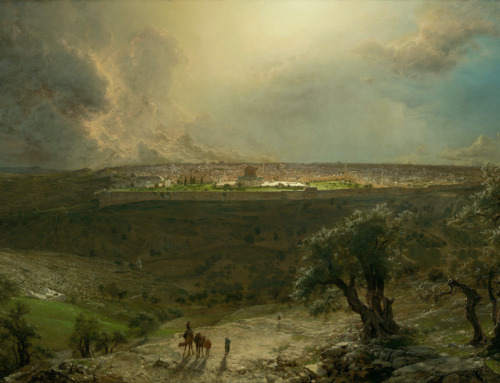My dad made my mom a dining room table for their wedding anniversary a few years ago. Romantic, right?
With Thanksgiving quickly approaching, let’s take a moment to consider this standard piece of furniture without which Thanksgiving would be much less enjoyable. You see, my dad was on to something when he made the table. He was providing the place where family life is formed.
With the hostile takeover of family life by television, personal phones, and busy after-school schedules, the family dinner in many households may only be experienced on holidays. Yet, rather than being only for a special social occasion, the family dinner, when shared together every day or most days of the week, is the place where the family learns to cohere as a community of individuals united in love.
Around the table, each family member learns how to express himself or herself and bring out his or her individual personality. Dad brings stability and order to the conversation. Mom encourages each child to speak his or her mind. In the midst of endless teasing (or fights), siblings learn how to speak up for themselves and roll with the punches.
Around the table, family members learn how to listen to each other. The youngest would be overpowered if her older siblings did not give her a chance to speak. By listening, everyone can develop a genuine interest in the exciting and mundane affairs of every day, sharing in the joys and sorrows of each family member.
Around the table, a family learns to confront change. Kids grow up and leave the house, but a chair awaits their visits home. Other chairs remain empty after the loss of a loved one. These speak loudly, but their emptiness is filled with prayer. Family life does not end with death.
For a Catholic, dinner time should bring to mind the Eucharist, which is both sacrifice and meal. The Catechism says that “the altar, around which the Church is gathered in the celebration of the Eucharist, represents the two aspects of the same mystery: the altar of the sacrifice and the table of the Lord” (1383). If your Church has a marble altar, the sacrificial signification comes through clearly. With a wooden altar, however, I would not say that the table signification prevails. After all, we don’t pull up chairs around the altar and pass dishes while engaging in conversation.
Perhaps the family dinner table is the place where we prepare ourselves to see the altar as also signifying a table. Around both the dinner table and the altar, we live as a community—the Body of Christ—united in love despite personal differences. We are challenged to be saintly individuals. We learn how to forgive and ask forgiveness. We remember our beloved dead. The dinner table thus becomes an ideal preparation for a more fruitful participation in the sacred banquet.
✠
Photo by Todd Ruth on Unsplash







